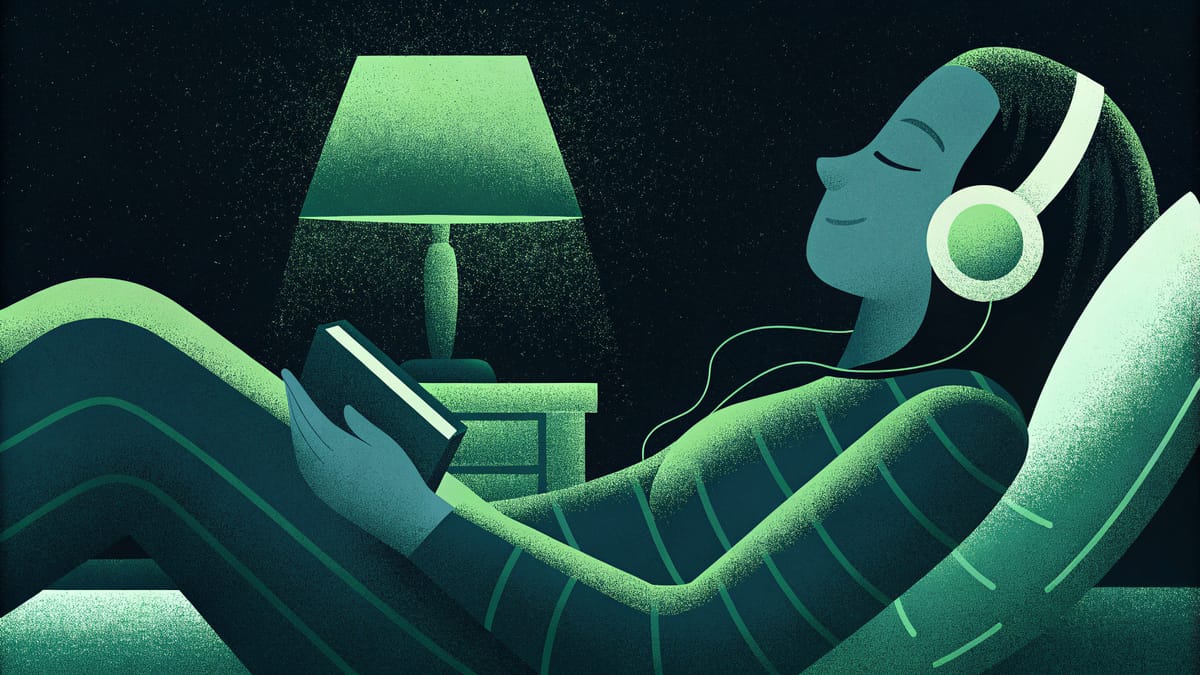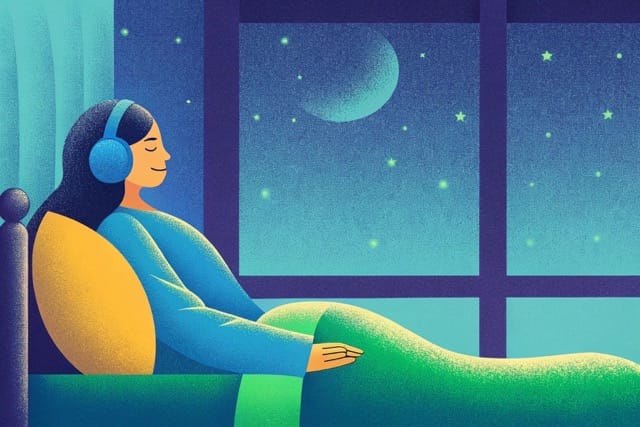What’s Better for Sleep: White Noise, Music, or Audio Stories?
Discover the best audio solutions for a restful night's sleep by exploring the benefits of white noise, relaxing music, and engaging audio stories tailored to enhance your bedtime routine.

Falling asleep isn’t always as simple as putting your head on the pillow and closing your eyes. For many, environmental distractions, stress, and an overactive mind can make drifting off to dreamland a challenge. But could white noise, music, or audio stories offer the solution you’ve been looking for? Let’s dive into these options to determine which might work best for you.

How White Noise Supports Restful Sleep
White noise is often considered a sleep aid superhero due to its ability to mask disruptive sounds. This consistent auditory background drowns out harsh or sudden noises, like a barking dog or honking car, that might otherwise disturb your slumber. By maintaining a steady ambiance, white noise helps encourage faster sleep onset and a more restful night overall.
One of its standout benefits is its reliability in noisy environments, such as urban areas or apartments with thin walls. If you’ve ever struggled to tune out your neighbor’s late-night TV habits or the hustle of city traffic, white noise might be your new best friend. Its simple, unchanging rhythm has been shown to reduce wake-ups, helping you achieve uninterrupted sleep.
However, it’s worth noting that longer-term exposure to white noise at high volumes might pose risks to your hearing. Keeping your device at a safe, comfortable volume is critical to protect your ears while reaping the sleep-enhancing benefits of this steady sound.
Should You Try Music For Sleep?
Relaxing music has long been associated with winding down before bed. Whether it’s soothing classical tracks, ambient background tunes, or gentle instrumental playlists, certain types of music can ease tension and establish a calming pre-sleep routine. Its emotional effect on the brain can lower stress levels, making relaxation feel more natural.
That said, not all music types are ideal for snoozing. Songs with lyrics or complex melodies might excite your brain instead of calming it, leading to overthinking or distraction. If you decide to incorporate music into your bedtime routine, stick to repetitive, lyric-free tracks with a slow tempo. Minimalist sounds can help signal to your mind that it’s time to let go of the day and drift off.
Ultimately, music can work wonders for some, but its effectiveness will vary depending on personal preferences and how susceptible you are to mental engagement with the melodies.
What About Listening To Audio Stories?
Audio stories—such as podcasts, bedtime stories, or audiobooks—can be another enticing option to try. They offer an immersive experience, which some people find comforting and relaxing at the end of a hectic day. If you enjoy being read to or prefer a narrative-style approach, audio stories might hold significant appeal.
However, there’s a potential downside: storytelling can sometimes backfire. A gripping plot or an engaging narrator might keep your mind alert, defeating the purpose of helping you fall asleep. If snuggling into bed with an audiobook intrigues you, it’s best to choose slow-paced stories that don’t demand too much mental energy. Low-drama narratives or flat, monotone voices can better aid your pursuit of sleep without overstimulating your brain.

Exploring The Other Noise Colors
While white noise gets much of the attention, there are different “colors” of noise that could also support better rest. Pink noise, for instance, incorporates more lower-frequency tones, creating a gentler sound that may improve sleep quality for some individuals. A handful of studies even suggest pink noise could enhance memory by promoting deeper sleep stages.
Brown noise, another variation, includes even deeper and richer sound frequencies. It’s particularly suitable for those who find higher-pitched tones aggravating. Experimenting with these alternatives could uncover a noise type uniquely tailored to your sleep needs.
The Role Of Personal Preferences
Sleep isn’t a one-size-fits-all activity, and neither are sleep aids. What may lull one person into slumber might not work for another. For example, while white noise brings peace to some, others may prefer the emotional resonance of calming music, or the familiarity of listening to their favorite podcast host.
The key is personalization through trial and error. Test different options to discover which sound, or combination of sounds, helps you relax and fall asleep most effectively. If your environment or mood shifts, you may even require different solutions on different nights.
Understanding Potential Drawbacks
Despite the potential sleep benefits, prolonged exposure to sound—whether it’s white noise, music, or stories—has its limitations. The most apparent caution lies in volume levels; consistently listening at high volumes can negatively affect your hearing over time. Opt for low, gentle settings to minimize risk while ensuring your sleep space feels soothing, not harmful.
Another consideration is reliance. Using sound-based strategies every single night could make it harder for you to sleep without them over time. Balance occasional silence to ensure you can rest naturally if need be.
Key Takeaways
- White noise is excellent at masking external noises, supporting quicker sleep onset and improving sleep quality, especially in noisy environments.
- Relaxing music and audio stories provide alternative bedtime options but come with the risks of mental engagement or distraction if chosen poorly.
- Individual preferences play a major role in determining effectiveness, so experimenting with different sound types is essential to find what works best for you.